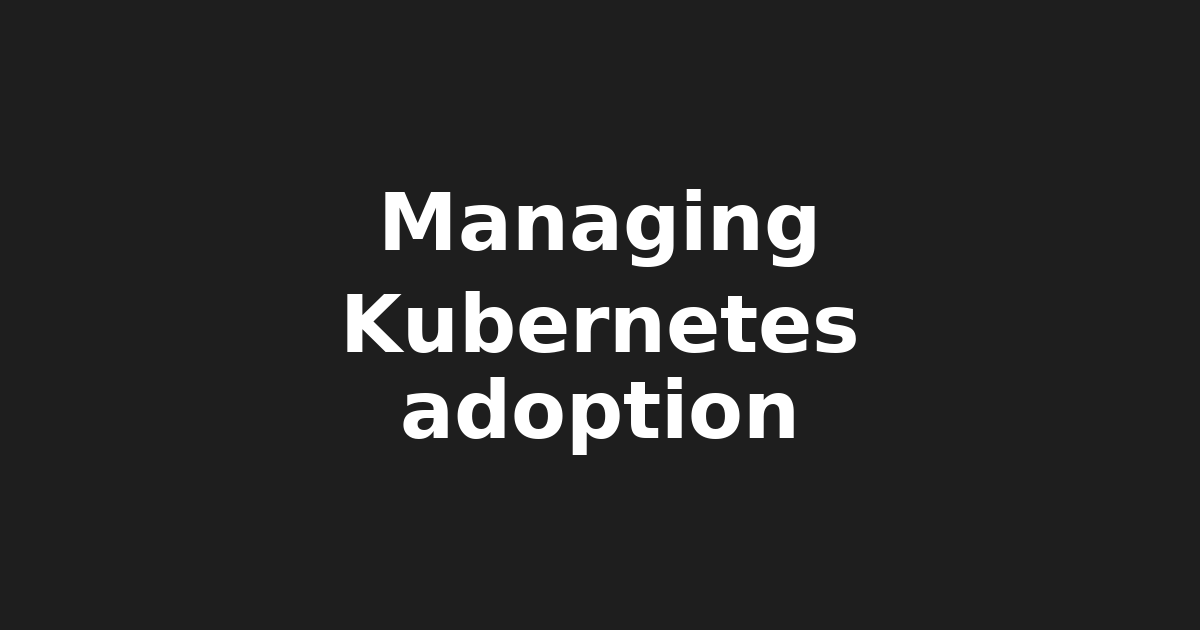Kubernetes Adoption Management in Multi-Cloud Environments

Kubernetes Adoption and Management in Multi-Cloud Environments: Trends, Tools, and Best Practices
=====================================================
With the increasing demand for scalability, flexibility, and cost-effectiveness in cloud computing, Kubernetes (K8s) has become a popular choice for deploying containerized applications. As more organizations adopt K8s, the need to manage and orchestrate their applications across multiple cloud providers is becoming increasingly important.
Relevance
Kubernetes adoption is relevant for various stakeholders:
- Developers: With the rise of microservices architecture, K8s provides a scalable and efficient way to deploy and manage containerized applications.
- Linux users: Many Linux distributions, such as Ubuntu and CentOS, have official Kubernetes packages, making it easier for users to install and manage K8s on their systems.
- System administrators: Managing multiple cloud providers requires knowledge of how to deploy, configure, and monitor K8s clusters across different environments.
- IT professionals: Understanding how to integrate K8s with other cloud services, such as AWS or Azure, is crucial for optimizing application deployment and management.
Key Trends
- Multi-cloud strategy: With the increasing adoption of hybrid cloud models, IT professionals need to manage K8s clusters across multiple cloud providers.
- Serverless computing: The rise of serverless computing has led to increased interest in integrating K8s with serverless technologies like AWS Lambda and Azure Functions.
- Kubernetes security: As K8s adoption grows, security concerns are becoming increasingly important.
Popular Tools and Technologies
Database Management
- TigerGraph: An open-source graph database designed for high-performance data analytics and machine learning.
Backup and Restore
- Velero: A Kubernetes backup and restore tool that provides disaster recovery and business continuity for K8s clusters.
Lightweight Kubernetes
- K3S: A lightweight, certified version of Kubernetes designed for small to medium-sized deployments.
Stay Up-to-Date
To stay current with the latest developments in Kubernetes adoption and management:
- Follow industry leaders
- Attend webinars
- Participate in online communities like Reddit's r/Kubernetes and r/learnkubernetes.
Conclusion
Kubernetes adoption and management is becoming increasingly important for organizations looking to deploy containerized applications across multiple cloud providers. By understanding the latest trends, tools, and best practices, IT professionals can optimize application deployment and management while ensuring scalability, flexibility, and cost-effectiveness.
References:
- "The State of Kubernetes 2022" by Red Hat
- "Kubernetes Security Best Practices" by Docker
- "TigerGraph: An Open-Source Graph Database for High-Performance Data Analytics"
Related Topics
- Cloud computing
- Microservices architecture
- Serverless computing
- Containerization
Additional Resources:
- Kubernetes documentation: https://kubernetes.io/docs/
- Red Hat's Kubernetes resources: https://www.redhat.com/en/blog/kubernetes
- Docker's Kubernetes security resources: https://www.docker.com/blog/kubernetes-security-best-practices
Future Developments
As Kubernetes adoption continues to grow, we can expect to see:
- More advanced security features
- Improved support for serverless computing
- Increased adoption of multi-cloud strategies
